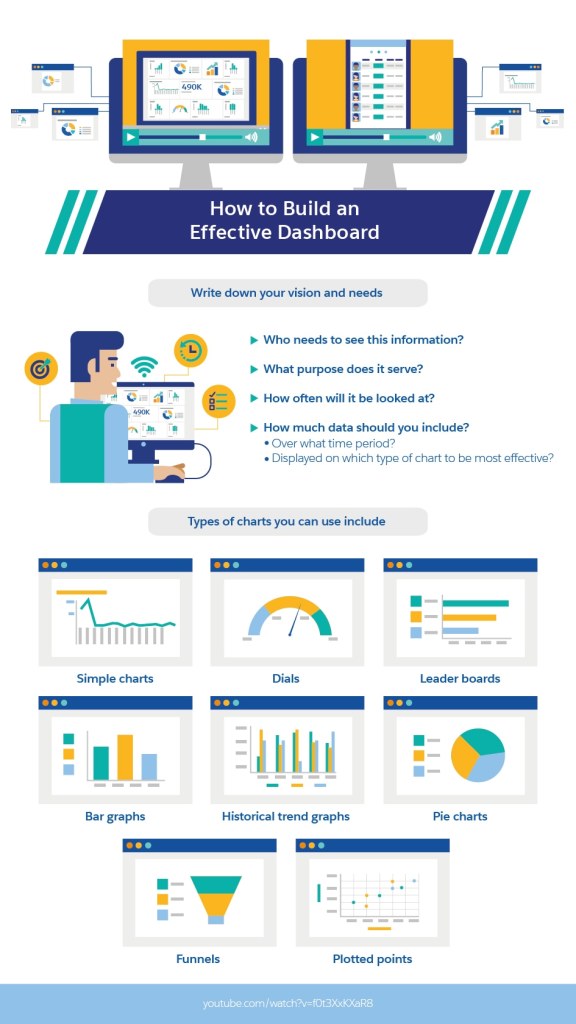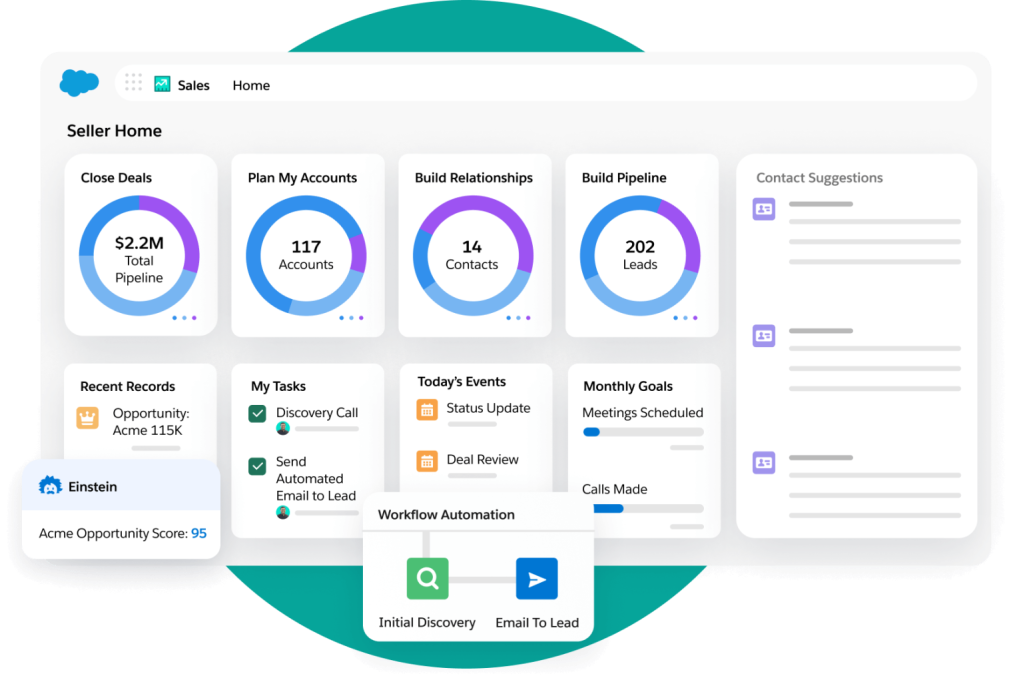Developing a comprehensive business plan is an exciting but daunting prospect for any business. There’s a lot to get right between discovering new opportunities, monitoring competitors, monitoring the market, and converting leads into paying customers.
That’s why putting a lot of thought into your business development (BD) strategy is so important. Creating a BD strategy can help you find new qualified leads, form more robust customer relationships, and, ultimately, drive company-wide growth.
In this comprehensive guide, we’ll show you exactly how to create an outstanding BD strategy of your own. So, without further ado, make yourself comfortable, and let’s dive in by looking at what business development means.
What is business development?
Business development is strategically identifying and deploying opportunities organisation-wide to help your business grow. This may sound like a broad definition, but it is because BD encompasses a wide range of disciplines.
For instance, depending on a company’s objectives, business development can be associated with business expansion, sales growth, forming strategic partnerships, converting qualified leads, improving customer relationships, increasing brand awareness, or boosting profitability.
Therefore, BD intertwines with every business department, including HR, sales and marketing, accounting, product development, and vendor management.
While many companies hire a senior business development manager to spearhead BD strategies, business development is ultimately a company-wide initiative. Everyone has to be aligned and on board for the strategy to achieve its goals.
There’s a common misconception that business development is a fancy word for ‘making more sales’, but this isn’t the case. Even though BD and sales teams work closely, it’s essential to understand how they differ.
Business development vs. sales
While business development operates within the broader sales team, its function differs from traditional sales activities.
Sales teams are exclusively focused on selling your products. They want to move leads down your sales pipeline and turn them into customers.
By contrast, the scope of business development is broader. It involves helping your company find new opportunities to drive growth and increase revenue.
Of course, selling your products and driving growth aren’t mutually exclusive goals, meaning sales teams and business development representatives (BDRs) typically work together.
However, the diverse objectives of BD mean that a BDR’s responsibilities are usually more vast than those of traditional sales roles. These can include creating business development plans, using account-based marketing strategies to build relationships, etc.
To expand on this, let’s take a closer look at the role of business development professionals.
Understanding business development roles
Business development isn’t the job of one individual. It’s a company-wide effort facilitated by every team, from HR and finance to marketing and sales.
That said, it’s essential to have experts dedicated to BD who handle the overarching strategy and ensure every other team member is working towards business objectives.
In this sense, two distinct roles play complementary yet different functions: business development managers and specialists.
Business development managers oversee the overall business strategy and direction of BD efforts within an organisation. They set KPIs, create strategies, allocate resources per the company’s objectives, and handle all project management responsibilities.
Business development specialists are the front-line employees who execute the tactics outlined by the BD manager. They focus on the day-to-day tasks to help the organisation hit its KPIs, such as guiding customers through the sales process or networking with leads.
While many other roles play an essential part in the BD process, such as the chief information officer, sales development representative, social media specialist, content marketer, and data analyst, we will focus primarily on these two roles because they are at the core of the BD efforts.
Business development representative objectives
Although a BD team can be large and responsibilities are often distributed across teams, this list provides a basic overview of what a business development representative (BDR) brings.
Identifying opportunities: The BDR proactively finds opportunities to drive business growth. These could relate to entering new markets, optimising marketing, forming partnerships, or improving the business’s product. Once they’ve found an opportunity, they should take further action to help the company capitalise on it.
Lead qualification: A BDR’s role often centres around lead qualification, the process of determining the best prospects to sell to. The BDR will understand the business’s ideal customer profile, allowing them to determine whether the company’s product fits a customer’s needs well.
Acting as a first point of contact: As the BDR is often the first to qualify a lead, they need to provide an exceptional first impression. Whether making cold calls to connect with clients or attending a networking event to build rapport, the goal is the same. The BDR must ensure customer satisfaction to help move qualified leads into the sales pipeline.
Collaborating with other teams: Because the BDR’s job is so multi-faceted, they must be the glue between all other teams. If the business has an overarching goal, it is up to the BDR to ensure everyone at the company is aligned and working towards that objective.
Staying up-to-date on competition and market trends: In addition to monitoring the customer journey, the BDR needs to keep its finger on the market’s pulse. It should understand competitors’ strategies, products, audiences, and broader industry trends to adapt to market shifts, threats, and opportunities.
Discovering partnership opportunities: If it is part of the business’s objectives, the business development manager should actively seek partnership opportunities, joint ventures, and mergers.
The role of business development in different industries
Business development shares common themes across all industries and business structures. Every BDR in every sector aims to identify prospects, generate more leads, improve customer and business relationships and, ultimately, drive long-term growth.
That said, business development also differs from sector to sector. For instance, a BD strategy in the fast-paced technology industry will differ from that in the heavily regulated healthcare industry. Let’s take a closer look:
Technology and IT
The technology industry moves faster than any other, meaning constant business development is essential for companies to identify new opportunities and keep pace with competitors.
In this space, business development is inextricably linked to the end product. BDRs must have basic knowledge of the software development lifecycle and a comprehensive understanding of their solution, its capabilities, and the roadmap for future innovation. Only then can they identify opportunities for business expansion and growth.
One major opportunity for business development in the tech industry is forming synergistic partnerships. Through a SWOT analysis, BDRs can identify related businesses that could fill gaps in their capabilities and propose potential partnerships.
These partnerships are often mutually beneficial, allowing each business to benefit from the other’s strengths, as with recent partnerships between Amazon and Meta, Adobe and Klaviyo, and Atlassian and Slack.
Health services
BD in the health sciences industry centres on forming close partnerships with key stakeholders, like healthcare providers, to bring the business’s products to market. Without prioritising this, healthcare organisations could be hindered by limited market access and fewer opportunities for innovation.
BDRs in this industry must also have a rigorous understanding of legislation. The healthcare industry is strictly regulated, meaning BDRs must work closely with business ethics and compliance teams to ensure they have the necessary licensing agreements and that their BD strategy works within the confinements of the law.
The healthcare industry presents many barriers to business development, but BDRs that identify smart opportunities and partner with the right institutions can improve customer experiences and cultivate long-term loyalty.
Financial services
The growth of fintech is redefining the role of BDRs in the financial services space. It has disrupted traditional business models and, with the support of open banking, created a level playing field for financial businesses to offer unique products and services.
Customers have more choices when deciding who to work with. As such, BDRs must focus on differentiating themselves from the competition by developing innovative products, providing exemplary service, and investing in intuitive API design.
Increased competition also means customers today demand more from their financial businesses. BDRs should prioritise ease of use and deliver personalised solutions based on user needs. These factors, ultimately, will increase retention rates and encourage customer loyalty.
As with the healthcare industry, finance businesses are also governed by strict regulations, meaning BDRs need a thorough understanding of compliance standards to ensure they adhere to legislation.
Retail
The retail sector demands an agile business development strategy because competition is high, and customer preferences are always subject to change.
As such, the primary focus for BDRs in retail is to maximise loyalty by meeting customer needs. This could be done by improving the product experience, prioritising omnichannel marketing, implementing partner programs, personalising outreach and lead nurturing tactics, or optimising the brand’s online presence to streamline the user experience.
Manufacturing services
The manufacturing sector differs from all other industries because a business’s success depends entirely on product quality.
Therefore, in addition to attracting new customers and nurturing leads, BDRs in the manufacturing industry have a unique responsibility to analyse and improve manufacturing and quality control processes. They must understand the products and how they are created.
This will enable them to find new ways to optimise that process, improve efficiency, and implement new tools to ensure the company’s product is of a consistently high standard.
The four cornerstones of a successful business development strategy
Before you create your business development strategy, there are four things you need to know.
Consider this your list of ingredients before the recipe: To bake a strategy that achieves success in business development, you will need:
- A clearly defined goal along with KPIs to achieve it.
- A detailed understanding of your target audience
- A firm grasp of your market and the opportunities within it.
- An overview of your strengths and weaknesses.
Let’s break each of these four cornerstones down one by one.
1. Defining your business goals
Every good business strategy begins with a clearly defined goal by understanding the ‘what’ before focusing on the ‘how.’
You probably already know what you’d love to achieve over the coming year, whether making more sales, getting more leads, or forming a few strategic partnerships. However, these goals are very general, making it difficult to measure the effectiveness of our BD strategy.
Therefore, we recommend taking your broad objective and refining it into a SMART goal:
- Specific: Make sure your goal is precise.
- Measurable: Ensure you can measure your goal with KPIs.
- Attainable: Make your goal realistic.
- Relevant: Keep your goal relevant to your business objectives.
- Time-bound: Set a time limit for you to achieve your goal.
Let’s take a general B2B goal like ‘increasing revenue’ and SMART-ify it to show this in practice.
“We want to increase our monthly recurring revenue (MRR) by 10% within 12 months.”
Setting SMART goals like this will help you with your market research. If you know what your goal is, you’ll know what opportunities to look for.
However, the goal above can still be improved and refined once we’ve researched our market more.
2. Understanding your target audience
Next, you need to develop a deep understanding of your target audience. Ultimately, this audience will help you reach the goals you defined in the previous step, so it pays to know them well.

We suggest creating several ideal buyer personas (IDPs). These are fictional but well-informed representations of your perfect customers. You can develop these by examining the demographics currently buying your products or services.
For each persona, include their age, demographic, job, pain points, and communication style. Once you have one or more fully fleshed-out personas, you can research them and see which target market aligns with your goals.
3. Knowing your market
Market research is one of the most overlooked components of an effective BD plan, but it’s essential. You need to look beneath the surface and learn about your potential target markets to find out what they want and how they think.
There are dozens of different ways to gather information about your target market, but here are a few ideas:
- Read recent industry reports for your sector.
- Check online databases for issues relevant to your organisation
- Send out a survey to gather information about your market.
- Ask your audience about their preferences directly.
- Read recent government statistics to discover trends.
As you research, look for opportunities to help you reach your goals. For example, let’s return to our goal of increasing MRR by 10%.
Let’s say we read a recent industry report. It tells us that our B2B target audience wants to fully trust a company before buying their service. Many want to speak with a representative directly and receive personalised outreach. In addition, our target customers will read an average of 10 pieces of content before deciding whether they trust a business enough to buy.
What a great find! We can now use this to refine our SMART goal:
“We want to increase our monthly recurring revenue (MRR) by 10% within 12 months by delivering personalised sales calls, networking at industry events, and creating educational content to drive organic traffic”.
Bingo! You can see how each of these four cornerstones tie together. By understanding your audience and researching their pain points, you can continually refine your objectives until you land on an actionable goal for your strategy.
4. Learning your strengths and weaknesses
Remove your rose-tinted glasses and examine your current market position. Knowing where you stand is essential to clearly state your strengths, weaknesses, and main value proposition.
To do so, you can’t go wrong with a SWOT analysis — carefully exploring your strengths, weaknesses, opportunities, and threats.
Strengths: What are your USPs or competitive advantages? Do you excel at a specific type of marketing? Do you have an excellent reputation with your customers? Make a note of everything your company excels at.
Weaknesses: Are there any areas you’re struggling with? Do your customers have any complaints? Write down your weaknesses.
Opportunities: What growth opportunities did you find during your market research? Are there any trends you discovered? Does your target audience have a new preference your team should know about?
Threats: Who are your direct competitors? Are there any regulations you need to be concerned about? How’s the economy? Note the broad and specific threats you might face as you implement your strategy.
This analysis will inform the rest of your BD approach, allowing you to determine the best methods to reach your goals. Once again, you can use your SWOT analysis to refine your initial SMART goals.
Creating your business development strategy
At this point, you should:
- Know your goal and what you need to do to achieve it.
- Understand the opportunities available to you.
- Know the obstacles you may need to overcome.
- Have a firm grasp of your target audience.
Got everything you need? It’s time to start building your BD strategy. Follow these steps, and you’ll have everything in place to grow effectively, boost revenue, enhance relationships with leads, hit sales targets, and excel at every stage of the buyer’s journey.
1. Create your core strategies
First, we need to outline one or more core strategies. These strategies should be specifically designed to help you reach your goal, taking into consideration your audience, market, and strengths.
Use your SMART goal as a jumping-off point and think about what you need to do to achieve it. There are various development strategies to consider, including:
- Networking: Establishing business relationships with clients to meet potential leads and convert them into paying customers.
- Outreach: Contact potential clients through social media, emails, phone calls, or direct mail.
- Content marketing: Creating original educational or promotional content to demonstrate expertise and reach customers online.
- Outbound advertising: Utilising paid promotion to reach your target customers and convince them of your product’s value.
- Strategic partnerships: Teaming up with other complementary businesses to achieve common goals and grow your reach.
- Referrals: Providing exceptional client experiences to turn customers into brand advocates that drum up business via word-of-mouth.
Let’s return to our example of a SMART goal: To achieve a 10% increase in MRR, we can combine outreach, networking, and content marketing.
To achieve that, we must work closely with your sales leads, marketing teams, customer service teams, and business leaders. We may also need to align with the IT team to facilitate the technical aspects of our outreach strategy.
Choose the methods that align with your objectives. Outline the broad strokes and the teams that must carry out the strategy. Once you’ve done that, you can refine it into an action plan in the next stage.
2. Break down your strategy into tactics
Now that you know the methods to help you reach your goal, determine the tactics for implementing them.
For example, you could create thought leadership white papers or write blog posts targeting relevant keywords to increase organic traffic through educational content.
Alternatively, your goal could be to grow your client base through networking. In that case, you might speak at conferences, host an educational industry webinar, or attend upcoming trade shows to talk with industry leaders.
This process transforms your BD strategy into an actionable checklist your teams can follow to help your business achieve its goals.
Expert tip: Remember your target audience as you refine your tactics. Where do they spend their time? Which methods will be the most effective for reaching and resonating with them? What do you know from your market research?
3. Set key performance indicators (KPIs)
You have your tactics, but how are you going to measure them? For each method, you need to set key performance indicators to track the effectiveness of your BD strategy.
There are dozens of valuable metrics for measuring your BD tactics, but a few work well.
- Lead-to-client conversion rate: How often does your strategy turn a lead into a paying customer?
- Monthly website traffic: Are your marketing and sales operations increasing traffic to your website?
- Retention rates: How many clients continue doing business with the company after the initial purchase?
- Customer acquisition cost (CAC): How much does the business spend to acquire a new customer?
Naturally, you’ll need to choose metrics that align with your objectives. For instance, let’s say you’ve opted for a content marketing strategy. Your goal is to increase organic traffic to your service page, and your tactic is to create thought leadership blog posts on topics relevant to your audience’s pain points.
In that case, a possible KPI could look something like this:
“We want to increase the number of qualified leads generated from the contact form on our service page by 25% in the next six months”.
Now we’re getting somewhere. This gives us a metric to measure once we post regular original content. It’s specific and provides a timeframe for a benchmark for performance.
Consider creating a sales dashboard to visualise your sales data KPIs and business development goals for a 360-degree view of your BD activities.

4. Assign roles and responsibilities
Once you have a clear list of tactics and KPIs, it’s time to start assigning roles and responsibilities.
For each of your tactics, you should ask yourself the following questions:
- Who is responsible for carrying out this task?
- What do they need to do to hit the KPI?
- How long do they have to reach the KPI?
- Are there any critical milestones they need to know about?
The key here is to be as specific as possible. The more information you can provide to a team member, the easier it will be for them to implement your plan.
For instance, ask one of your business development specialists to attend five trade shows in three months. Your specialist should aim to engage with attendees at each trade show to collect at least 20 qualified leads. They should then enter all leads into a CRM solution and follow up with each lead within a week of the event.
This tactic is specific and actionable. It gives the team members a clear idea of their goal and what they need to do to achieve it, leaving everyone in the loop. Above all else, this is the key to making sure everyone understands and works towards your business goals.
5. Implement and track your strategy
You’ve done the hard work. Now, all that’s left to do is implement your strategy. Distribute your action plan to all involved teams, make sure everyone is aligned on their role, and then hit the big green button.
At this point, all that’s left to do is monitor your progress. Measure all relevant metrics to keep track of your KPIs. Your CRM solution can help with this.

In addition, check in regularly with all teams to review progress. Ask for feedback and see if anyone requires additional support. Also, asking what your customers think is always a good idea. This encourages brand loyalty, and they may have some insights you hadn’t considered.
And lastly, celebrate success. If a team is excelling at their tasks, let them know. Doing so will keep them motivated and working toward your goal.
8 quick and easy biz dev ideas
As business development is such a diverse discipline, there’s no shortage of ways to drive growth and improve your strategy. Here are some additional business ideas to consider.
1. Don’t sleep on LinkedIn
There are many better ways to find qualified B2B leads than through LinkedIn. Follow a lead, engage with their content, and then send a personalised message to begin the sales process.
2. Be innovative with your networking
There are plenty of ways to network with industry peers, such as through conferences, trade shows, industry events, and social media. Don’t be afraid to change things up.
3. Provide a demo
Did you get a lead stuck in your pipeline? Offer a demo or free trial to let them try your product or service for themselves. This can be the difference-maker between a sale made and a customer lost.
4. Don’t give up on cold leads
A cold lead doesn’t mean a dead lead. Set a reminder in your CRM to follow up after a few months to see if your prospect has changed your heart.
5. Diversify your content
Blog posts are essential but aren’t the only way to drive organic traffic. Whitepapers, E-books, case studies, videos, infographics, and social media posts are excellent options. Diversifying is always a good idea.

You can also collaborate with other brands. For example, at Salesforce, we teamed up with Harvard Business Review to create a helpful Generative AI whitepaper on the consulting industry.
6. Ask for feedback
Always ask your customers and staff for feedback on your BD strategy. They often have insights on how you can improve, showing you care about their experience.
7. Iterate constantly
A BD strategy is never static. Research your market and audience to learn new trends and discover more opportunities. There’s always room to refine your approach.
8. Invest in your website
Your site is often the initial point of contact for prospects. Make sure it stands out. Optimise it for search engines and invest in a great user experience so it is easy to navigate.
Overcoming common business development challenges
The definition of business development is changing, bringing new opportunities and several challenges. Let’s examine some of those challenges and strategies for overcoming them.
1. Competition
With technological advancement and globalisation, there’s a lot of competition to keep up with in the digital age.
To overcome this, business development managers and specialists must focus on differentiation. The priority must be on delivering unmatched value to customers, whether that be through building solid relationships or providing a unique value proposition to gain a competitive advantage.
2. Lack of resources
The scarcity of labour and materials means many businesses need more resources to fund BD. In response, BDRs must perform financial analysis to choose projects with the potential for a large return on investment (ROI).
In addition, resource efficiency, robust financial management, and financial planning can help businesses fund growth over the long term.
Lastly, business grants, equity financing, and business loans can help fund essential initiatives, though it is essential to weigh up the benefits and drawbacks of this kind of funding.
3. Market uncertainty
Market uncertainty can significantly hinder business development, whether due to evolving healthcare legislation, changing retail customer preferences, or rapidly developing technology.
The business development division must constantly conduct market research and use technology to study customer habits. It should stay abreast of industry trends and take nothing for granted to ensure it is always agile in uncertainty.
4. Data requirements
Business development teams require comprehensive data about customers, marketing efforts, and sales. If this business intelligence is available, teams can make decisions considering every angle.
To prevent this, the business development division must take the time to collate siloed data stores in a centralised database. A CRM allows a business to collate all of its information in one place.
Our Einstein 1 solution will automatically harmonise your disparate data stores, providing a complete view of your business through the cloud. This will let you view all of your data in one central catalogue, letting you draw insights to make better decisions and promote business development.
5. Recruitment and training
Business development skills are not easy to acquire, and many organisations need more specialist employees to spearhead BD on a significant scale.
Business management must scale the BD workforce as the business grows. Hiring new specialists helps with strategic management and brings diverse perspectives to the table, which can help solve everyday challenges and discover new opportunities.
6. Longer sales cycles
With more competition, consumers often need to transition from awareness to the point of sale. For this reason, business development specialists risk letting qualified leads slip through the cracks.
To solve this problem, BDRs must diligently listen to their customers and track their journey to purchase. A CRM solution can help with this by providing information about a customer’s past engagements with the company and their position in the sales cycle.
7. Difficulties optimising strategies
The hardest part about business development is understanding how to assess results and refine strategies. BDRS must measure the effectiveness of their business development efforts against key performance indicators.
Specialists should use data analytics and financial analysis to evaluate the results of their strategies against benchmarks like customer acquisition cost (CAC), lead conversion rate, sales pipeline velocity, and customer retention rate. This information will lead to continuous improvement through refinement of the iterative strategy.
Business development case study
Let’s explore an example of business development and bring different elements to light.
Flipkart Case Study
Indian eCommerce giant Flipkart started on modest business foundations as a book retailer in 2007 but steadily developed to sell over 80 million products across 80+ categories, including mobile phones, fashion items, and groceries. It currently holds over 48% of the market share in the Indian eCommerce space.
Flipkart’s business development strategy is multi-faceted. The brand is constantly expanding its marketing campaigns to encompass a mixture of offline and online tactics, including partnerships with influencers, a solid social media presence, and regular industry conferences, all to reach a broad audience and convert customers across multiple channels.

After acquiring customers, the business has implemented several tactics to encourage loyalty, including offering 24×7 live chat, loyalty programs, nationwide delivery, and personalised offers for long-term customers. The support, in particular, is exceptional, with a human-centric approach to support customer retention.

Flipkart’s BD strategy also centres around strategic partnerships. The company recently linked with Fireblocks, a digital asset company that builds solutions based on blockchain technology. The goal is to redefine eCommerce with a Web3-based eCommerce solution that allows users to earn NFT-based rewards.

As you can see, Flipkart’s business strategies are ambitious but calculated, encompassing various business development components. The brand isn’t afraid to take risks with its marketing and sales plan and always looks to stay one step ahead of the competition. Every decision has a purpose, and the customer will always come first.
Business development CRMs
Customer relationship management (CRM) is a system that tracks and manages your business’s interactions with existing and potential customers. It makes building better customer relationships, monitoring KPIs, and driving long-term value for your business easier. Let’s examine why this is so important for BD.
CRM tracks historical information
A CRM solution tracks essential data about existing customers and prospects. For instance, it can display past communication history with a lead, allowing a business development professional to understand the context of a conversation and pick up where another team member left off. This simplifies account management, making nurturing qualified leads easier and improving conversion rates.
CRM centralises your data
CRM software combines siloed sales, customer service, and digital marketing data stores into one centralised database. This creates a 360-degree view of every customer, enabling business development executives to draw insights and discover opportunities considering the complete picture.
CRM nurtures brand loyalty
CRM makes it easier to improve customer retention because it tracks engagement with existing customers. As such, it prevents customers from leaving a business due to neglect. It can remind salespeople and retention teams to contact customers after a certain time or send out automatic emails with offers and news after a certain period.
CRM supports new growth strategies
CRM provides a wealth of historical data, allowing BDRs to make informed predictive decisions, optimise resource allocation, and identify new business opportunities. They can also more easily use data to back up their ideas when proposing strategies to business administration.
CRM automates tedious tasks
Lastly, CRM can automate tedious manual tasks, such as data wrangling. It can also offer sales automation and send out emails at predefined times. This gives BD specialists more time and energy to focus on high-level tasks, such as using their data to create strategies, generate leads, and retain existing customers.
CRM fosters collaboration
CRM encourages collaboration between all teams, including BDRs, human resources, leadership and management teams, marketing, and customer support, by offering a centralised database where information can be shared seamlessly.
Summing up
Business development is an indispensable component of any successful organisation. It facilitates revenue growth, aids in identifying ideal prospects, generates more leads, and closes more deals.
To reap the benefits, focus on creating a robust business development plan and ensuring your team is equipped to set your business on the growth path.


















